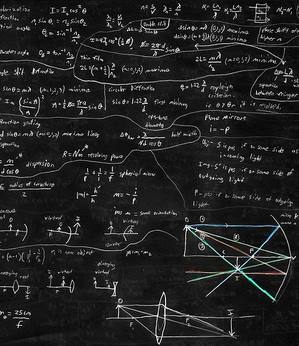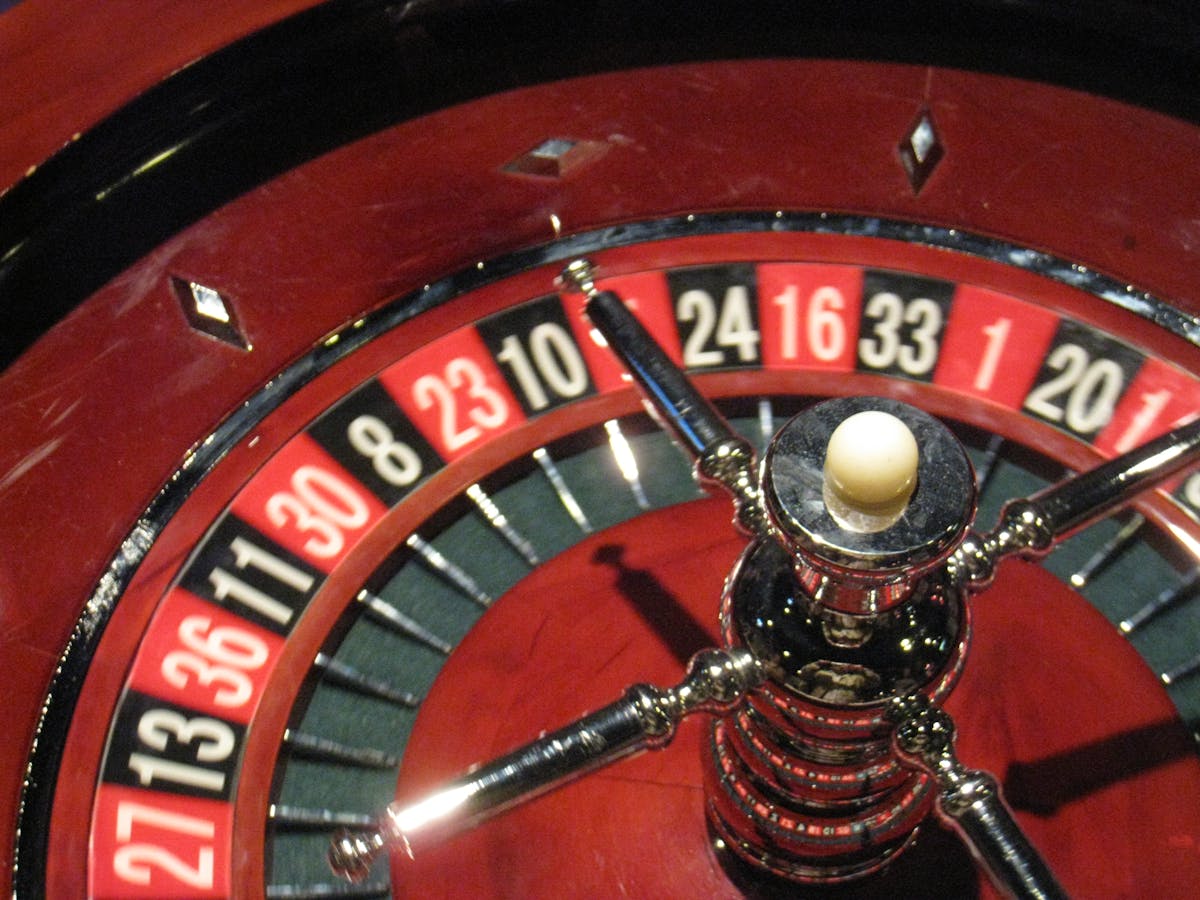Get The Edge At Roulette How To Predict Where The Ball Will Land
- Get The Edge At Roulette How To Predict Where The Ball Will Landfall
- Get The Edge At Roulette How To Predict Where The Ball Will Landed
- Get The Edge At Roulette How To Predict Where The Ball Will Landslide
- Get The Edge At Roulette How To Predict Where The Ball Will Land Christopher Pawlicki
The latest for your roulette ball to reach the correct destination, however, is not more than 185-wheel spins. Your constant number of reaching 185 roulette win spins, is definite to bring big wins sliding away and making up to the losses. The answer to if skills are required for roulette gambling is dynamic. To drop the ball and gift! If the wear & tear are very pronounced, the dominant diamonds will be so obvious that you can predict with a high degree of accuracy where the ball will land. 3- Design Yes, manufacturers go above and beyond to design optimally random roulette wheels.
Can Roulette Be Beaten? Maybe
The nobles of Europe loved to gamble on the wheel. They loved it right up until the very moment when they lost all their money and property. Then they had to find a rich American woman to marry, usually a Southerner; a woman who was interested in a title and, in exchange, was ready, willing, and able to support her noble Prince Destitute with wads of cash from her daddy.
It was a fair exchange, we guess, if such exchanges are what people want out of life. The nobles of Europe, sad to say, were often bereft not only of money but of sense when they played the wheel; they employed centuries old, losing, methods such as the following (known as the Roulette’s Ugly Seven):
1. doubling up when they lost a bet
2. continued doubling until they won a bet or hit the house edge
3. doubling up and adding one unit after each losing bet until they hit the house edge
4. going with the trend of the colors/sections/numbers that were hitting
5. going against the trend of colors/sections/number that were hitting
6. going straight up on a number that had recently hit more than once


7. going straight up on a number that had not hit in a long, long while

On a perfectly balanced wheel, not one of the Ugly Seven is a winning strategy. They each will lose the percentage that the house has over them on the total amount of money a player bets in the long run. On Europe’s single-zero wheel (currently found at Isle of Capri!), that edge is 2.7 percent on the inside bets and 1.35 percent on the outside 'even-money' bets when the casino has an option called 'en prison.' On the American double-zero wheel that edge is a frightening 5.26 percent on the inside bets and, in some casinos, a 2.63 percent edge on the outside 'even-money' bets where the 'surrender' option is allowed (see table tips). So, if over the course of a lifetime of playing roulette, a European nobleman or woman bets one hundred million dollars on a combination of inside and outside wagers, he or she can expect to lose between $1,350,000 and $2,700,000. An American can expect to lose between $2,630,000 and $5,260,000 on those same wagers.
The math is merciless.
And that’s that, right?
Wrong!
Over the years ingenious roulette players have figured out ways to beat the physical wheel, as opposed to the mathematical underpinnings of the theoretical game, by locating wheels that were slightly biased in favor of certain numbers. These wheels may have had design flaws, or usage flaws that over time caused the ball to favor some numbers or sections over others. Players call such strategies 'biased-wheel play' and it was just such 'play' that was used by the few individuals who were able to 'break the bank' at Monte Carlo in the early part of the Twentieth Century. They recorded tens of thousands of spins and when they found a wheel that was obviously 'off' -- they came on with big bets and battered the venerable casino to the tune of hundreds of thousands of dollars (today, with inflation, that would be millions).
Now, along comes another daring advantage player, Christopher Pawlicki, who has penned a new book in the Scoblete-Get the Edge Guides series, appropriately titled Get the Edge at Roulette: How to Predict Where the Ball Will Land! (Bonus Books), that not only discusses how to employ 'biased-wheel play' but also discusses other methods of beating the wheel such as taking advantage of 'dealer signatures,' 'wheel clocking,' and 'sector shooting.' Pawlicki also has an interesting chapter in his book on how to beat Internet roulette as well!
So while the math of roulette might be merciless, the mechanics of the game just might be beatable if you have the time, discipline, and, in some cases, the talent to put into practice what Pawlicki preaches.

Take the example of a 'dealer signature.' For years gambling writers have speculated that some dealers might be able to influence the fall of the ball because they get into a 'rhythm' where they pick the ball up a certain way, wait a given beat, then release the ball with the same speed each and every time. These dealers are not aware of what they are doing and their signature is therefore unconscious. Nevertheless, a certain pattern can develop where the ball lands within 'X' number of pockets from the last spin. So a dealer might spin in such a way that more than two-thirds of the time the ball lands within ten to twenty pockets of the last hit.
If you know such a dealer, money can be made on them -- sometimes a lot of money. Pawlicki shows you how to analyze these dealers and take advantage of their 'signatures.'
In a similar way, some dealers have consciously developed the ability to hit sectors of the wheel. Pawlicki himself can do this as he dealt roulette for years in charitable games (the worst games you can play!). These dealers are called 'sector shooters' and they too can be exploited if you understand their abilities and psychology.
The 'wheel clocker' is an entirely different animal. A player can develop the ability to analyze the trajectory of the ball and then approximate where it will land when it finishes its orbit. Pawlicki shows exactly how to develop this ability. Unfortunately, of all the methods in his book, this is the most difficult to learn and to put into practice in a casino. It requires months of practice to perfect and then tremendous concentration to perform in the casinos. Frank once tried to master this method and all it got him was 'eye strain and an upset stomach' every time he attempted it.
The advantage-play methods that Pawlicki writes about are all perfectly legal. Of course, casinos might not want you to play these systems and, unfortunately for players, there are simple ways for casinos to thwart each and every method -- if they know a player is using such a method, that is.
We realize that most casino players are obviously not all that interested in putting in the time and the practice to master most advantage-play techniques. It’s a lot of time and a lot of practice. The amount of money you make from all that work is not guaranteed the way a good job guarantees a steady income with benefits.
Get The Edge At Roulette How To Predict Where The Ball Will Landfall
But for those of you who would like a chance to turn the tables on the casinos, these are the only methods that can actually work to do just that. They are not 'pie-in-the-sky' approaches, but concrete attacks on where the casino game of roulette is most vulnerable.
Even though most players who play will never read Pawlicki’s book, and the majority of those who do read it won’t have the desire to put into practice the various methods he espouses, it is still fun to know that for just about every game the casinos come up with, some players, some times, can come up with ways to beat those games -- legally! The casinos have created ingenious environments for players to enjoy playing games where the house usually has the edge, but some ingenious players have invented methods for surviving those environments and coming out on top in those games.
Get The Edge At Roulette How To Predict Where The Ball Will Landed
Pawlicki is one such player. Roulette players will find his book contains great food for thought -- in fact, it contains a whole buffet of ideas.
Get The Edge At Roulette How To Predict Where The Ball Will Landslide
(Get the Edge at Roulette: How to Predict Where the Ball Will Land! is available from Paone Press at 1-800-944-0406, from Amazon.com or at any major bookstore.)
Get The Edge At Roulette How To Predict Where The Ball Will Land Christopher Pawlicki
Frank Scoblete is the # 1 best-selling gaming author in America. His books and tapes have sold over a million copies. For a free catalog call: 1-800-944-0406 or write to: Paone Press, Box 610, Lynbrook, NY 11563.